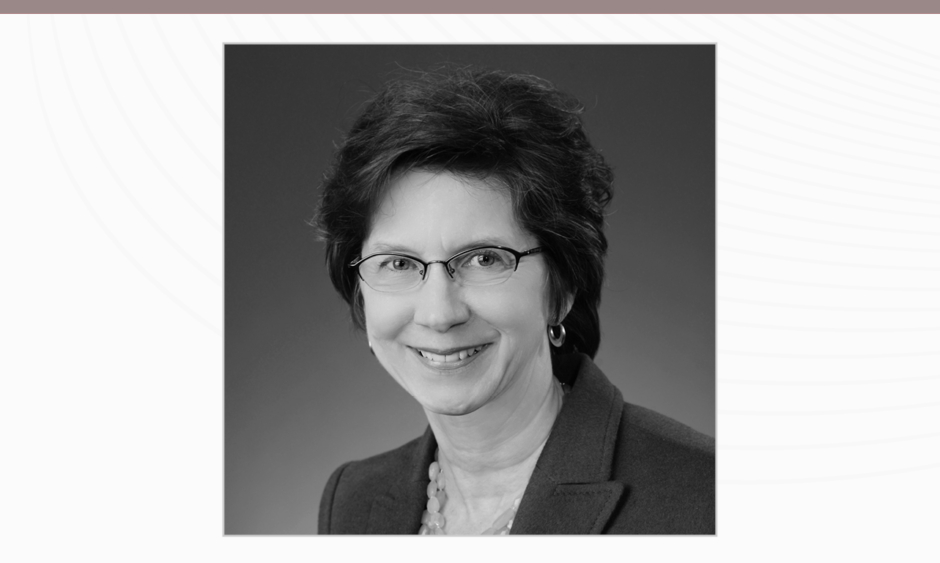Joan Bathon | Member of the EULAR Scientific Programme Committee; Director of the Division of Rheumatology at New York-Presbyterian Hospital/Columbia University Irving Medical Center, New York, USA
![]()
With your numerous years of experience as a rheumatologist, what initially sparked your interest to pursue a career in this field and motivated you to continue researching?
My first encounter with autoimmunity was in an immunology course in college, during which I learned about systemic lupus erythematosus. The concept that the human immune system could make antibodies against its own cellular and molecular components was fascinating to me. In the latter 2 years of medical school, when we were able to choose electives, I decided to explore this interest more deeply by choosing an elective in rheumatology. The range of illnesses and their unusual and distinctive presentations was more interesting and exciting than I could have imagined. I decided then and there to pursue subspecialty training in rheumatology after an internal medicine residency. During residency, I also found infectious diseases to be extremely interesting, but rheumatology still won out. I was thrilled to be accepted at Johns Hopkins University (Baltimore, Maryland, USA) for my rheumatology training and there was exposed to a breadth and depth of research that I had not experienced previously. I was smitten, especially with trying to understand causality and development of more effective treatments for rheumatoid arthritis. So, that was the beginning of a long career in the field.
Do you think there are any misconceptions about your speciality?
Yes, absolutely. There is still the very strong perception that we are musculoskeletal doctors like orthopaedists, but without the surgical component. This misconception is understandable because many of our diseases have an inflammatory arthritis component. Since arthritis is painful, this is often the symptom that initially brings the patient to our attention. But, while many medical specialties are focussed on a single organ like the heart or the kidney or the liver; autoimmune rheumatic diseases are generally multi-organ illnesses. The best example is lupus, which can affect the brain, lungs, heart, skin, kidneys, blood vessels, and more. Moreover, our diseases involve specific patterns of organ involvement that are nuanced and subtle at times. So, explaining autoimmune disease is a little complicated. Getting the message across that we treat illnesses that affect multiple organs characterised by a dysregulated immune system can be challenging, especially because we also do treat conditions that are joint specific (e.g., gout). However, our professional organisations (the EULAR, the American College of Rheumatology [ACR], and others) are really skilled at crafting those messages for the public.
The New York-Presbyterian Hospital/Columbia University Irving Medical Center is thought of as one of the top departments in the USA; what do you think other university hospitals could learn from the approach taken there?
Like other top academic Rheumatology programmes, we have recruited or developed a nationally/internationally recognised faculty, each of whom specialises in a particular autoimmune rheumatic disease and contributes new knowledge to the field through research. This research may be clinical (defining disease characteristics or presentation, biomarkers, outcomes) or basic/translational (understanding mechanisms of disease in the laboratory). In some situations, a clinical and a basic/translational investigator are paired and collaborate in the study of their disease of interest. These collaborative approaches within a single disease have facilitated the establishment of dedicated clinical programmes in each major autoimmune rheumatic disease, such as a Scleroderma Center, Lupus Center, Inflammatory Arthritis Center, and so on. The patient who attends an appointment in one of these centres knows they are seeing a top expert in their disease and who, in turn, has assembled experts in other specialties where necessary to address lung-, cardiac-, kidney-specific complications. So, the patient receives a comprehensive multi-specialty evaluation initially, as well as long term management by a team of top experts in their disease.
You currently have more than 167 international publications to your name for your research in rheumatology. What do you believe to be the current gaps in literature and what topics merit greater attention?
For the most part, we still do not understand what truly causes our diseases. Much progress has been made on the genetic side, identifying genes that put patients at higher risk for developing an autoimmune rheumatic disease. But genes are generally not enough, in and of themselves, to cause disease but rather require a trigger. We still do not understand what actually triggers our diseases, whether it is an infection, an environmental insult, or other stimulus. We have learned that smoking, for example, is a very significant risk factor for rheumatoid arthritis, especially when combined with genetic predisposition, but in general we have only brushed the surface on identifying critical environmental and infectious triggers. We also now understand that these illnesses have a long asymptomatic phase, during which the immune system is gearing up like an iceberg forming under the surface. Eventually that iceberg rises above the surface and the patient develops symptoms. But we need a better way to identify those asymptomatic individuals during this process so we can intervene while they are still asymptomatic and healthy, to avert the progression to a clinical disease. While most autoimmune rheumatic diseases are characterised by ‘out of control’ inflammation that must be quelled, several also have a significant fibrotic component (e.g., scleroderma). We particularly do not understand the pathogenesis of this fibrosis and how to prevent it from worsening. While there are some advances in this field which have led to two new U.S. Food and Drug Administration (FDA)-approved medications, the effects of these medications are relatively modest, and much more investigative work is needed. There is still a lot to learn to improve the lives of our patients!
Since your appointment to Director of the Division of Rheumatology at New York-Presbyterian Hospital/Columbia University Medical Center, what has been your proudest achievement?
Rheumatology at Columbia University has a long and distinguished history. Columbia was the site of the first clinical and research unit dedicated to rheumatic diseases in the USA, the site of the discovery of rheumatoid factor and its link to rheumatoid arthritis, seminal work in the role of immune complexes in lupus, in defining the functions of CD4, CD8, and discovery of CD40L, and the discovery of the HLA-DR ‘shared epitope’ that conveys the strongest risk for rheumatoid arthritis, and many others. However, when I took over 10 years ago, the Division had contracted to a small, albeit outstanding, clinical division and with only one researcher (a giant in the field: Robert Winchester). I urgently needed to re-build the clinical division but did so first with funded clinical researchers who would build clinical and clinical research programmes in their respective diseases. This would then lay the foundation for attracting basic/translational researchers who study disease mechanisms but need to collaborate with clinical researchers to obtain blood or tissue samples from patients with their disease of interest. This strategy has been successful. We have gone from five faculty members to 15 and are still growing, and our research budget has increased 12-fold. We now have dedicated thriving research programmes in rheumatoid arthritis and juvenile idiopathic arthritis, lupus, scleroderma, spondyloarthropathy, psoriatic arthritis, and immune events related to checkpoint therapy. We still have some gaps to fill, so the work is always ongoing.
How much of an impact do you believe the EULAR congress has, both directly on rheumatologists and indirectly on patients?
The EULAR congress has a tremendous impact on both groups. From the rheumatologist’s perspective, the annual congress is the key mechanism in Europe and beyond for annual clinical education and updates, presentation of novel research findings, enabling networking among clinicians and researchers, and as a platform for the development of guidelines and recommendations in the field. Its value is immeasurable. For patients, it is a mechanism to bring the voices and now actual physical presence of patients to the table in the discussion of management and treatment of the rheumatic diseases, as well as in cutting edge research. Their voices have broadened our views as rheumatologists in such a meaningful way. EULAR was a real leader in patient engagement before many other organisations had even considered it.
What are the most significant changes you have seen in the field of rheumatology during your time working in this discipline?
Without a doubt, it has been the progress in the treatment of rheumatoid arthritis. Except for the use of rituximab for lymphoma, advances in the treatment of rheumatoid arthritis in the late 1990s and early 2000s led the medical field in the development of targeted therapies, both biologic and synthetic. Since then the field has exploded with numerous targeted therapies now approved not only for a broader array of autoimmune diseases, but also for cancer, kidney disease, multiple sclerosis, inflammatory bowel disease, and others. While we still see some people with rheumatoid arthritis who have difficult to control disease despite these advances, by and large patients are experiencing remarkably better quality of life and better work productivity than they had prior to 2000. We are seeing similar trends in people with psoriatic arthritis, spondylitis, and vasculitis. Improvements in the management of lupus and scleroderma and myositis have been more incremental but still on a positive trajectory. Ultimately, we would like to cure disease not just suppress it. This is where therapeutic efforts and discovery are still much needed.
How has EULAR adapted to the ‘new normal’ of virtual congress and online learning?
Rapidly and effectively. EULAR had only 2 months in the spring of 2020 to pivot from a face-to-face conference, that had been in the planning for over a year, to a completely online conference in June 2020. The contents had to be scaled back but it was nonetheless very effective, and members were much relieved to see each other during this very stressful first wave of COVID. This year the EULAR conference was back to its full robust agenda and went very smoothly. My hat is off to all of those in the EULAR organisation who worked tirelessly to bring about this wonderful meeting. Unfortunately, it was harder for us ‘across the pond’ to join the live meetings in real time due to the significant time difference. But the enduring nature of the material allows any registrant to catch up on the recorded sessions in their own time zone. I can say that the content this year is as outstanding as ever.








